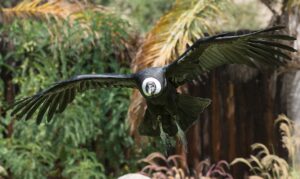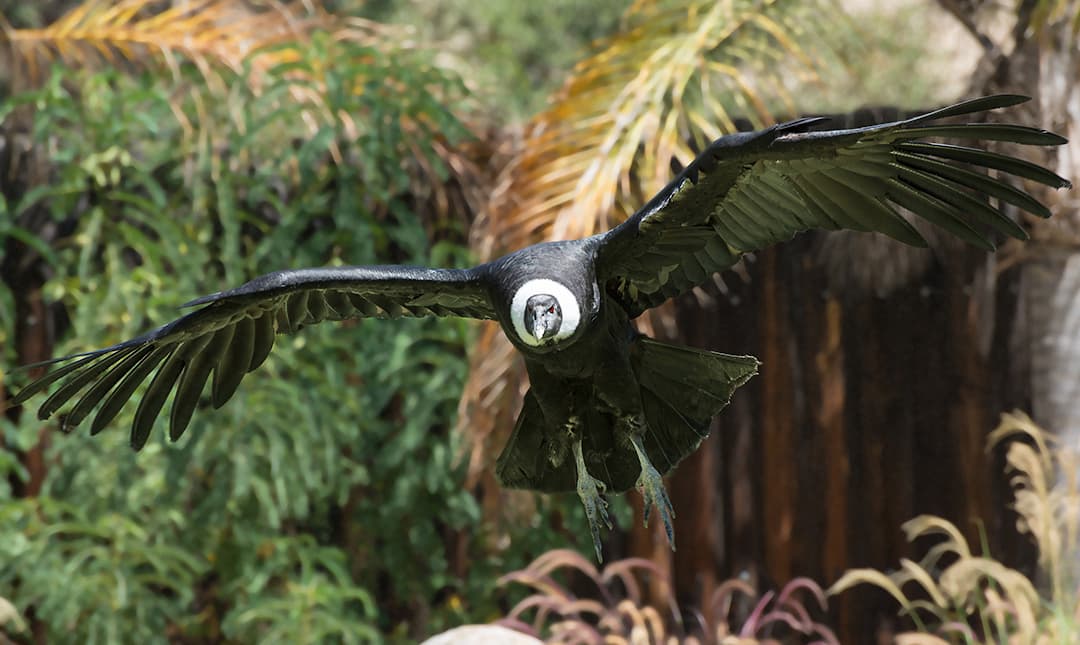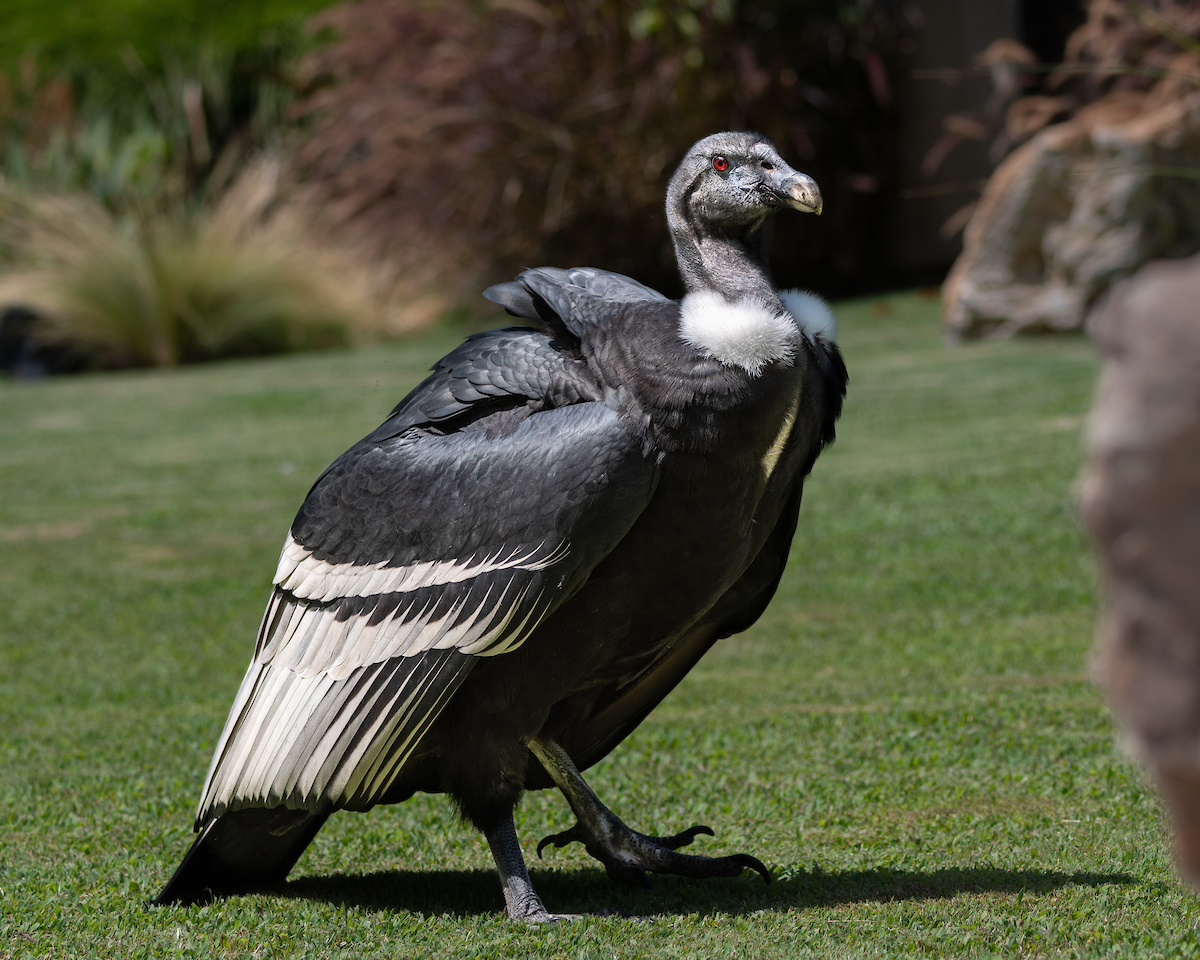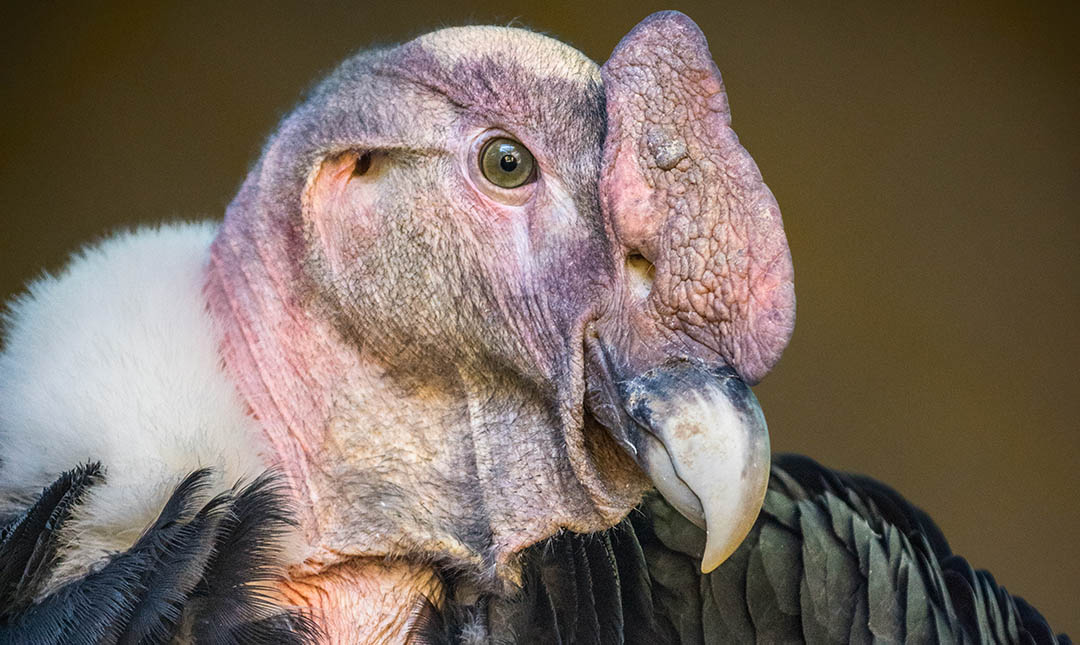About
With a wingspan reaching ten feet, the Andean condor is one of the world’s largest flying birds. It is a member of the vulture family, and like other vultures, it is a master at navigating air currents and heat thermals. Condors may flap their wings only once an hour while soaring and surveying. Feathers on their wingtips allow them to make fine adjustments to their flight path. Andean condors have been documented traveling up to 150 miles a day in search of food. To warm themselves and keep their feathers healthy, condors sun themselves. Perched on rocky cliffs, they stretch out their wings, allowing sunlight to reach as many feathers as possible.
Since condors feed on carrion rather than killing their own prey, their feet are not as strong as those of other raptors and they lack lethal talons. Their bald heads allow them to more easily keep clean after consuming decaying food. After a meal, they may defecate on their own legs and feet in a process called urohydrosis. The uric acid in their waste is thought to disinfect their legs and kill disease-carrying pathogens and parasites. Condors lack a syrinx, or vocal organ, and cannot call or sing like other birds. Instead, they make soft sounds including hisses and grunts to communicate with one another.
The Andean condor is a national symbol of Bolivia, Colombia, Ecuador, Peru, Chile, and Argentina. The condor also plays an important role in many indigenous human cultures who consider it a sacred bird.



HABITAT
These majestic birds are found at high elevations in the Andes Mountains from Venezuela and Colombia to Patagonia and Peru.
DIET
As scavengers, these condors eat carrion (dead animals).
PHYSICAL CHARACTERISTICS
These large birds can grow up to 4 feet long and weigh 33 pounds. Their lifespan in the wild is up to 50 years, but in human care they can live more than 75 years.
LOCATION WITHIN THE ZOO
You’ll find this animal in the South America section. You may also see it in the World of Birds Show. See Zoo Map.



